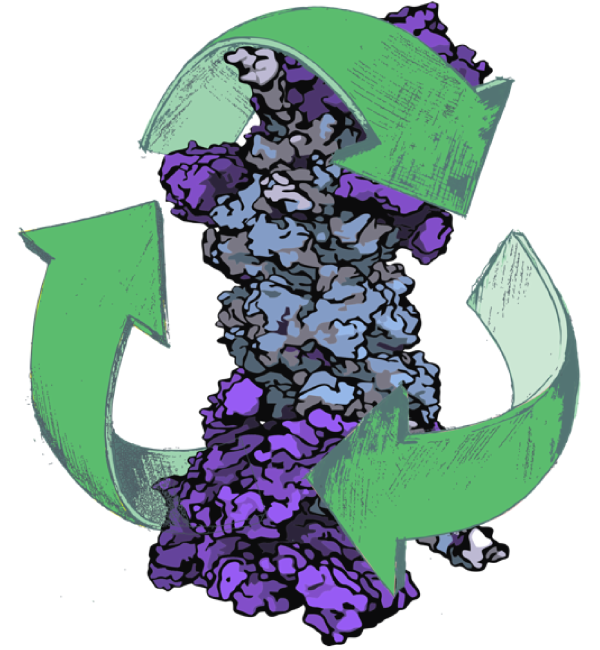C&S3: Protein Degradation by the 26S Proteasome

Protein degradation is vital for a variety of essential cellular processes, including protein quality control, cell cycle regulation, adaptive immune response, and apoptosis. The 26S proteasome is responsible for the vast majority of regulated intracellular protein degradation and an important drug target for multiple diseases, including cancer, neurodegenerative diseases, and immuno-inflammatory disorders. The 26S proteasome is an ATP hydrolysis driven 2.5 MDa molecular machine that recruits, unfolds, and degrades poly-ubiquitin tagged proteins through a complex interaction clockwork of over 60 known protein subunits. Despite its substantial role in the cell's life cycle, the proteasome's detailed atomic structure and mechanism still remain elusive. Center-developed software tools will be employed to investigate the underlying molecular mechanism of (1) substrate recruitment and (2) substrate unfolding by the proteasome.
To obtain an atomic structure of the proteasome, different forms of experimental data need to be integrated. As the proteasome contains several highly-flexible and multi-conformational domains, experimental X-ray and cryo-EM densities are sparse and result in structurally unresolved segments. Center-developed hybrid modeling tools (TRD3) combining de novo structure prediction, MDFF, and electron densities have been employed to predict the unresolved segments of the proteasome. To connect the large structure (3.5 M atoms) of the proteasome with functional processes occuring on the millisecond timescale, it is necessary to overcome the timescale limitations associated with classical MD simulations. Hence, Center-developed technologies for enhanced sampling (TRD1), e.g., steered-MD (SMD) and path sampling techniques, will be employed.
Previous MD and SMD simulations of ubiquitin recruitment through Rpn10, a ubiquitin recognition subunit, have revealed that not only hydrophobic, but also electrostatic interactions and re-folding events, are important in recognizing the poly-ubiquitin tag of proteins through the proteasome. Recently, Baumeister, a long-term collaborator of the Center within DBP8, resolved a ~7 Å resolution cryo-EM density of the yeast proteasome. Applying MDFF (TRD3), a technique developed by the Center for combining MD simulation with experimental data from cryo-EM, X-ray crystallography, and cross-linking, Baumeister was able to obtain a partial structure of the yeast proteasome. In a joint follow-up project, hybrid modeling tools (TRD3) have been utilized to predict the unresolved segments of the yeast proteasome. The completed yeast proteasome structure was then used to derive an atomic structure of the human proteasome based on homology. In addition, the human proteasome structure has been fitted, employing MDFF adapted for high-resolution cryo-EM densities (TRD3), to the newly obtained 4.0 Å resolution cryo-EM density of the human proteasome (Baumeister), resulting in an atomic human proteasome structure with resolved nucleotides (submitted joint publication).
The atomic structure obtained represents the substrate-accepting ground state of the proteasomal functional cycle. Depending on their nucleotide-bound states the proteasomal ATPase-ring adopts different conformations, which induce changes in the organization of the surrounding Non-ATPases. There are at least three distinct conformational states during the functional cycle of substrate recruitment, deubiquitylation, and unfolding. Now, in further collaboration with Baumeister, we aim to derive atomic structures with resolved nucleotides of these conformational states from soon expected high resolution cryo-EM data employing the protocol developed for the human proteasome (TRD3). Following the strategies established by the Center for other motor proteins like Rho helicase and ATP synthase, these atomic structures will allow use of path sampling techniques (TRD1) to study the conformational transitions during motor action. The insights gained from these simulations will suggest key residues for investigation via future mutagenesis studies as well as provide dye-labeleling positions for FRET experiments (Baumeister) to further illustrate conformational transitions triggered by ubiquitin binding and substrate unfolding. A long term goal of the project will be the use of our atomic structures for the study of interactions between the proteasome and various drugs to exploit the proteasomes role as ubiquitous drug target.



